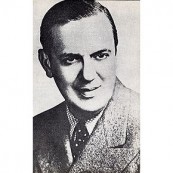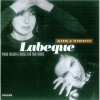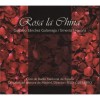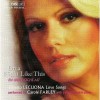传记
Ernesto Lecuona y Casado (August 6, 1895 – November 29, 1963) was a Cuban composer and pianist of worldwide fame. He composed over six hundred pieces, mostly in the Cuban vein, and was a pianist of exceptional skill.[1][2] His father was Canarian and his mother was Cuban.
Lecuona was born in Guanabacoa, Havana, Cuba. He started studying piano at an early age, under his sister Ernestina Lecuona, a famed composer in her own right. As a child prodigy, he composed his first song at the age of 11.[3] He later studied at the Peyrellade Conservatoire under Antonio Saavedra and the famous Joaquin Nin. Lecuona graduated from the National Conservatory of Havana with a Gold Medal for interpretation when he was sixteen. And he performed outside of Cuba at the Aeolian Hall (New York) in 1916.
In 1918 he collaborated with Luis Casas Romero, Moisés Simons, Jaime Prats, Nilo Menéndez and Vicente Lanz in setting up a successful player piano music roll factory in Cuba producing Cuban music and also copies from masters made by QRS in the USA. The brand label was "Rollo Autógrafo"
He first travelled to Spain in 1924 on a concert tour with violinist Marta de la Torre; his successful piano recitals in 1928 at Paris coincided with a rise in interest in Cuban music.
María la O, Lecuona's zarzuela, premiered in Havana on March 1, 1930. He was a prolific composer of songs and music for stage and film. His works consisted of zarzuela, Afro-Cuban and Cuban rhythms, suites and many songs which are still very famous. They include Siboney (Canto Siboney), Malagueña and The Breeze And I (Andalucía). In 1942, his great hit, Always in my heart (Siempre en mi Corazon) was nominated for an Oscar for Best Song; however, it lost to White Christmas. Lecuona was a master of the symphonic form and conducted the Ernesto Lecuona Symphonic Orchestra, employing soloists including Cuban pianist and composer Carmelina Delfin. The Orchestra performed in the Cuban Liberation Day Concert at Carnegie Hall on October 10, 1943. The concert included the world premiere of Lecuona's Black Rhapsody. Lecuona gave help and the use of his name to the popular touring group, the Lecuona Cuban Boys, though he did not play as a member of the band. He did sometimes play piano solos as the first item on the bill.
In 1960, thoroughly unhappy with Castro's new régime, Lecuona moved to Tampa and lived on West Orient Street with his relative, singer Esperanza Chediak. Lecuona lived his final years in the US. Three years later, on November 23, 1963 he died at the age of 68 in Santa Cruz de Tenerife, in the Canary Islands, as a result of an attack of asthma, a disorder which had persecuted him his entire life.[4] He was interred at Gate of Heaven Cemetery in Hawthorne, New York, but his will instructs that his remains be repatriated once the current régime runs its course. A great deal of Lecuona's music was first introduced to mass American audiences by Desi Arnaz, a fellow Cuban and Lucille Ball's spouse.
Lecuona's talent for composition has influenced the Latin American world in a way quite similar to George Gershwin in the United States, in his case raising Cuban music to classical status.
Ernesto and Ernestina's cousin Margarita Lecuona was another accomplished musician and composer. She was the author of the song "Babalú", made popular in the Latin American world by Miguelito Valdés, and in the United States by Desi Arnaz (who, contrary to popular folklore, did not write the song).
Lecuona was included as a character in the novel The Island of Eternal Love, by Miami-based Cuban writer Daína Chaviano, together with other important names in Cuban music.









